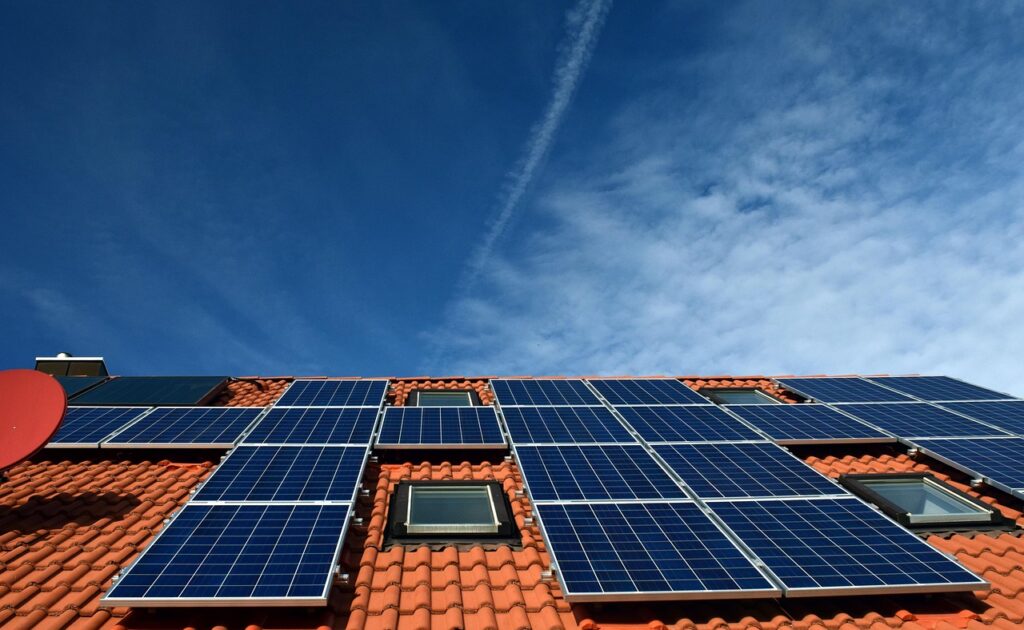Building-integrated photovoltaics are solar technologies designed to be seamlessly incorporated into a building’s structure, such as roofs, façades, or windows. Unlike traditional solar panels that are simply added onto existing surfaces, BIPV systems replace conventional building materials and serve both as part of the building envelope and as a source of renewable energy. BIPV systems generate electricity while maintaining architectural integrity, making them a dual-purpose solution for sustainable building design.
They offer a functional advantage by combining energy production with structural elements, reducing the need for separate solar installations. This integration supports energy efficiency and contributes to the reduction of a building’s carbon footprint without compromising its design or utility. The versatility of BIPV allows it to adapt to various building types and applications, expanding the possibilities for clean energy adoption in urban environments.
As energy demands rise and sustainability becomes a priority, BIPV presents an important innovation that aligns renewable energy generation with modern architectural trends. Its ability to seamlessly blend into building components makes it a strategic choice for developers and designers focused on energy-conscious construction.
Understanding Building Integrated Photovoltaics (BIPV)
Building Integrated Photovoltaics (BIPV) combines solar energy technology with building materials to create energy-generating structural components. This integration replaces or supplements conventional construction elements without compromising functionality or aesthetics. The following details clarify BIPV’s definition, system types, and how it differs from traditional photovoltaic setups.
Definition and Core Concepts
BIPV refers to photovoltaic materials embedded directly into building components such as roofs, façades, windows, or skylights. These materials serve dual functions: they generate electricity from solar energy and act as integral parts of the building envelope.
Unlike external solar panels, BIPV products replace conventional building materials rather than being mounted afterward. This means BIPV systems contribute structurally and architecturally, providing benefits like weather protection and daylight management in addition to power generation.
BIPV systems often improve building performance by offering thermal insulation and noise reduction. Their seamless integration enhances building aesthetics by eliminating bulky solar installations.
Types of BIPV Systems
BIPV systems vary based on their integration and application within the building envelope. Common types include:
- Façade-integrated systems: Solar panels replace exterior cladding or curtain walls.
- Roof-integrated systems: Solar elements substitute traditional roofing materials like tiles or shingles.
- Window-integrated systems: Semi-transparent photovoltaic glass or modules serve as windows or skylights.
- Shading devices: Solar panels used in sunscreens or canopies provide energy and shading.
Advanced designs use bifacial solar cells capturing light from both sides, enhancing energy yield. Some systems combine photovoltaic technology with thermal systems (BIPV/T) for added efficiency.
BIPV vs Traditional PV Installations
Traditional photovoltaic (PV) systems are typically mounted on existing buildings without replacing structural components. They are often installed on racks or frames outside the building envelope, known as Building Applied Photovoltaics (BAPV).
In contrast, BIPV systems integrate directly into the structure and serve as functional building materials. This eliminates the need for separate mounting hardware and can reduce material and labor costs.
BIPV provides architectural freedom, allowing for cleaner designs and multifunctional surfaces, whereas traditional PV panels can be visually intrusive. However, BIPV may involve higher upfront design complexity and initial costs due to integration requirements.
| Feature | BIPV | Traditional PV (BAPV) |
| Integration | Built into building structure | Mounted externally |
| Functionality | Dual: energy generation + building material | Energy generation only |
| Aesthetic impact | Seamless, customizable | Often bulky, more visible |
| Installation complexity | Higher due to integration | Lower, modular installation |
| Cost implications | Typically higher upfront | Moderate, lower initial cost |
Applications and Benefits of BIPV
Building-integrated photovoltaics (BIPV) serve multiple roles by generating electricity while acting as building components. Their use ranges across various building types and contributes notably to energy performance, design, and compliance with regulations.
Commercial and Residential Use Cases
BIPV systems are applied in both commercial and residential buildings, integrated into roofs, facades, windows, and shading devices. In commercial buildings, they often replace traditional construction materials, providing clean energy to reduce operational costs. Residential use includes solar roof tiles and window-integrated panels, which support homeowners in lowering electricity bills.
The systems can be installed during new construction or retrofitting, enabling flexible adaptation. Both sectors benefit from BIPV’s dual function—structural and energy producing—streamlining space usage without added installation footprint.
Energy Efficiency and Sustainability
BIPV enhances a building’s overall energy efficiency by generating renewable energy onsite, reducing dependence on external power sources. It cuts greenhouse gas emissions by offsetting fossil fuel electricity.
Some BIPV systems use advanced PV technologies like bifacial or semi-transparent cells, improving energy yield and allowing natural light penetration. Integrated solar components also contribute to improved thermal insulation, which reduces heating and cooling demands, optimizing building performance in varied climates.
Design Flexibility and Aesthetics
BIPV offers significant architectural design freedom by replacing conventional building materials with solar-active components. This integration supports a seamless appearance, maintaining or enhancing the building’s visual appeal.
Materials used include solar glass for windows or curtain walls and textured panels for facades. Transparency, color, and shape variations allow architects to customize designs while meeting functional needs. This flexibility makes BIPV suitable for both modern and historic building contexts.
Regulatory and Incentive Considerations
BIPV installations are subject to building codes, electrical standards, and zoning laws, which vary by region. Compliance with local regulations ensures safety, structural integrity, and grid compatibility.
Government incentives, such as tax credits, grants, and rebates, often promote BIPV adoption. These financial supports improve project feasibility and reduce payback periods. Early consultation with regulatory bodies and incentive programs is essential to maximize benefits and meet all requirements effectively.



